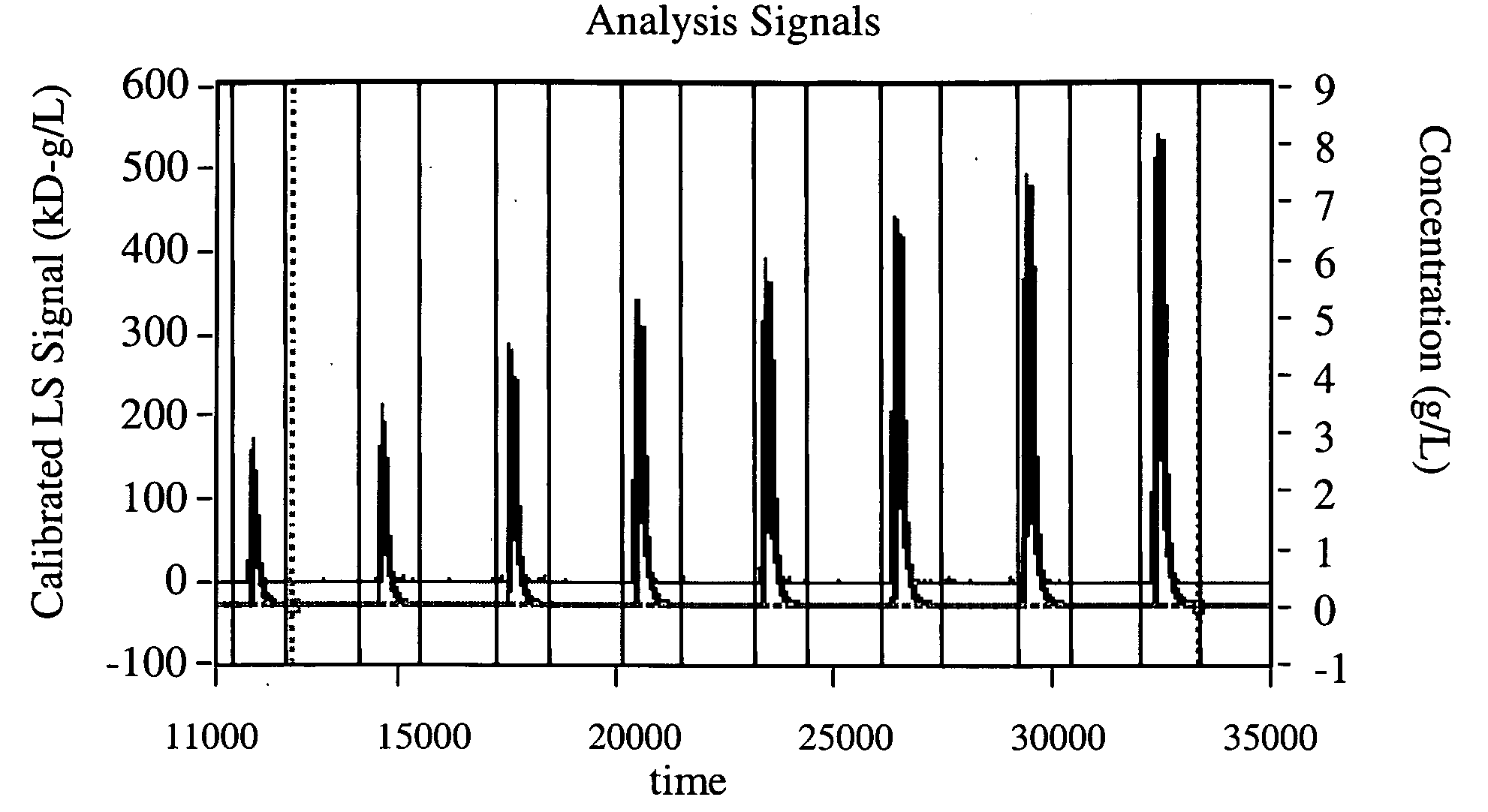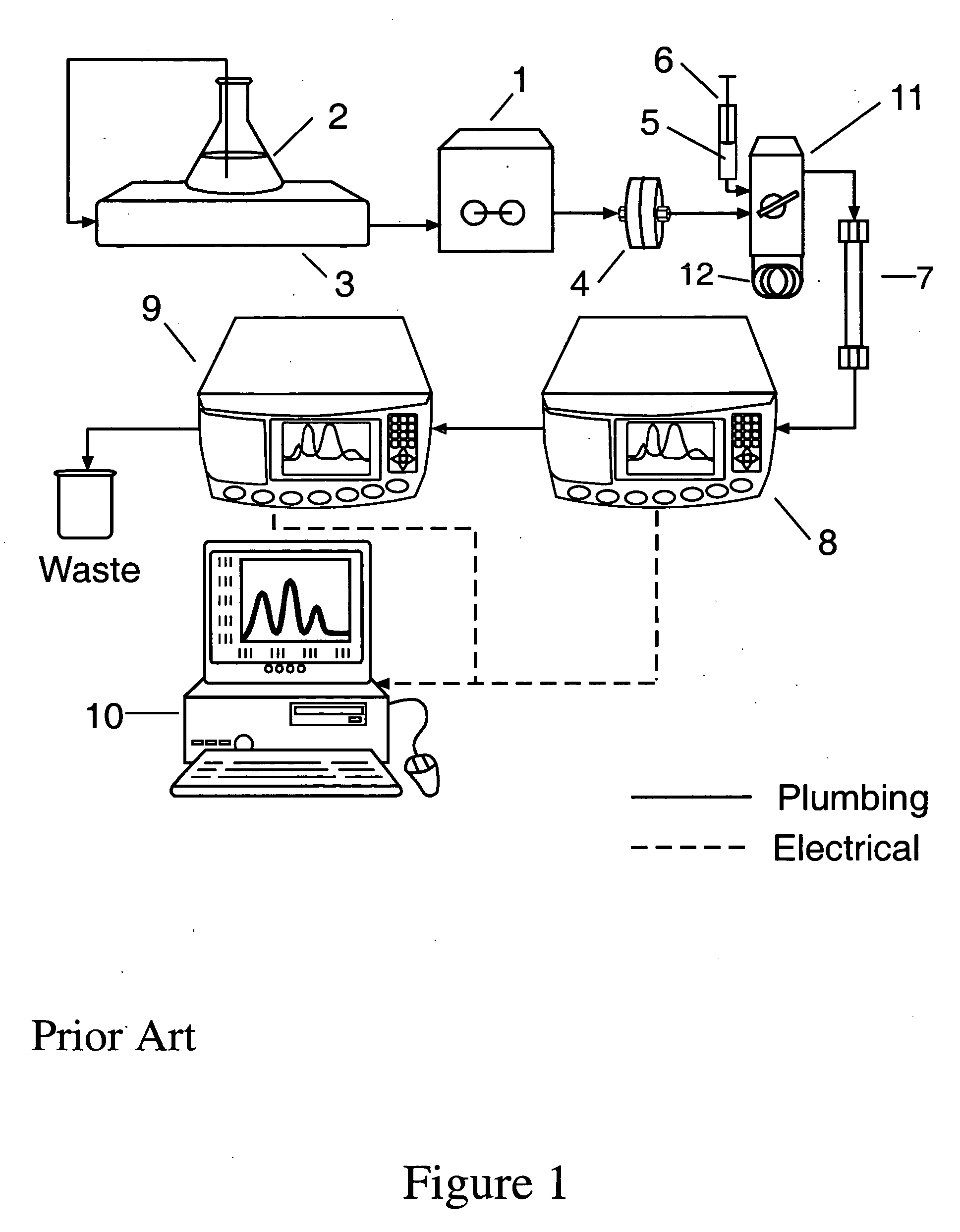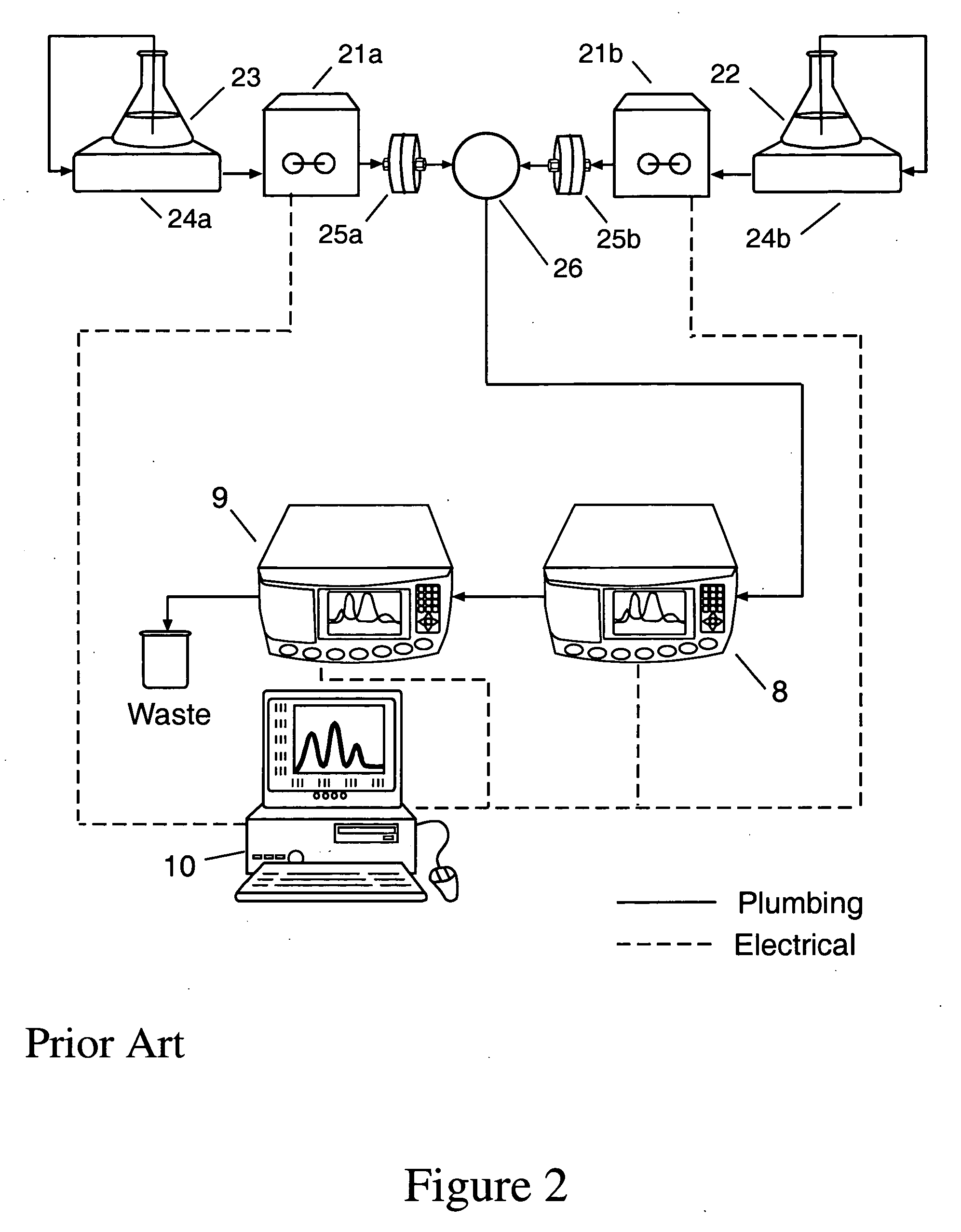Method for determining average properties of molecules in solution by injection into a flowing solvent
- Summary
- Abstract
- Description
- Claims
- Application Information
AI Technical Summary
Benefits of technology
Problems solved by technology
Method used
Image
Examples
first embodiment
[0039]In a first embodiment denoted the “injection valve method”, depicted in FIG. 1, solvent is drawn by pumping means 1 from a solvent reservoir 2 through a degasser 3 and then pumped through filter means 4 to the injection valve 11 and on to the detectors 8 and 9. The degasser 3 is generally used to remove dissolved gasses from the solvent as such gasses might subsequently produce small bubbles in solution that could interfere with the desired measurements from the solution itself. Filter means 4 is generally incorporated as shown to remove residual particulate material from said solvent that could interfere with the desired measurements. One example of the pumping means is the model G1310 isocratic pump from Agilent Technologies, Inc., Santa Clara, Calif. An example of a degasser is the Systec Multi-Channel Vacuum Degasser, available from Upchurch Scientific, Oak Harbor, Wash. The solvent passes through the injection valve 11 set to bypass position so that the solvent does not f...
second embodiment
[0040]In a second embodiment denoted the “dual-pump method”, depicted in FIG. 2, two computer-controlled pumps 21a and 21b, e.g. the Microlab 500 Dual-Syringe Diluter / Dispenser, Hamilton Corp., Reno, Nev., comprises two independently controllable syringe pumps, are used to draw sample from a sample reservoir 22 and solvent from a solvent reservoir 23. These are transferred through degasser chambers 24a and 24b and pumped through filters 25a and 25b. The flow rates of the two pumps are adjusted by means of the computer, and the streams combined and pumped through a mixing chamber, e.g. the Hypershear in-line static mixer, available from Analytical Scientific Instruments, El Sobrante, Calif., in order to produce a continuous stream of sample at the desired concentration. The mixed sample may be temporarily stored in a holding volume 26 which includes the mixing chamber, tubing, desalting column, and any additional volume as may be required. After the desired volume of mixed sample has...
third embodiment
[0041]As would be evident to those skilled in the art, a third embodiment would create sequential sample concentrations with a pair of pumps as per the dual pump method, injecting the mixed sample into a sample loop, and the sample would be pushed on to the detectors by an additional pumping means upon switching the injection valve, as per the injection valve method.
[0042]In the event that the sample requires prior dialysis, a desalting column 7, e.g., the HiTrap desalting column, available from Amersham BioSciences, Uppsala, Swede, may be placed before the MALS detector 8.
[0043]Each successive sample 5 passes through the MALS detector 8, whereby the values of the excess Rayleigh ratio at each angle, Rj(θk), are measured at successive elution volumes Δvj; and through a concentration detector 9, shown as a differential refractive index (dRI) detector, whereby the sample concentration ci is measured at each volume interval Δvi. The resultant light scattering and concentration signals ...
PUM
 Login to View More
Login to View More Abstract
Description
Claims
Application Information
 Login to View More
Login to View More - R&D
- Intellectual Property
- Life Sciences
- Materials
- Tech Scout
- Unparalleled Data Quality
- Higher Quality Content
- 60% Fewer Hallucinations
Browse by: Latest US Patents, China's latest patents, Technical Efficacy Thesaurus, Application Domain, Technology Topic, Popular Technical Reports.
© 2025 PatSnap. All rights reserved.Legal|Privacy policy|Modern Slavery Act Transparency Statement|Sitemap|About US| Contact US: help@patsnap.com



